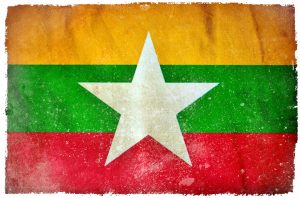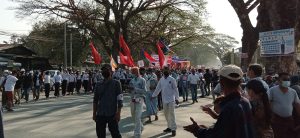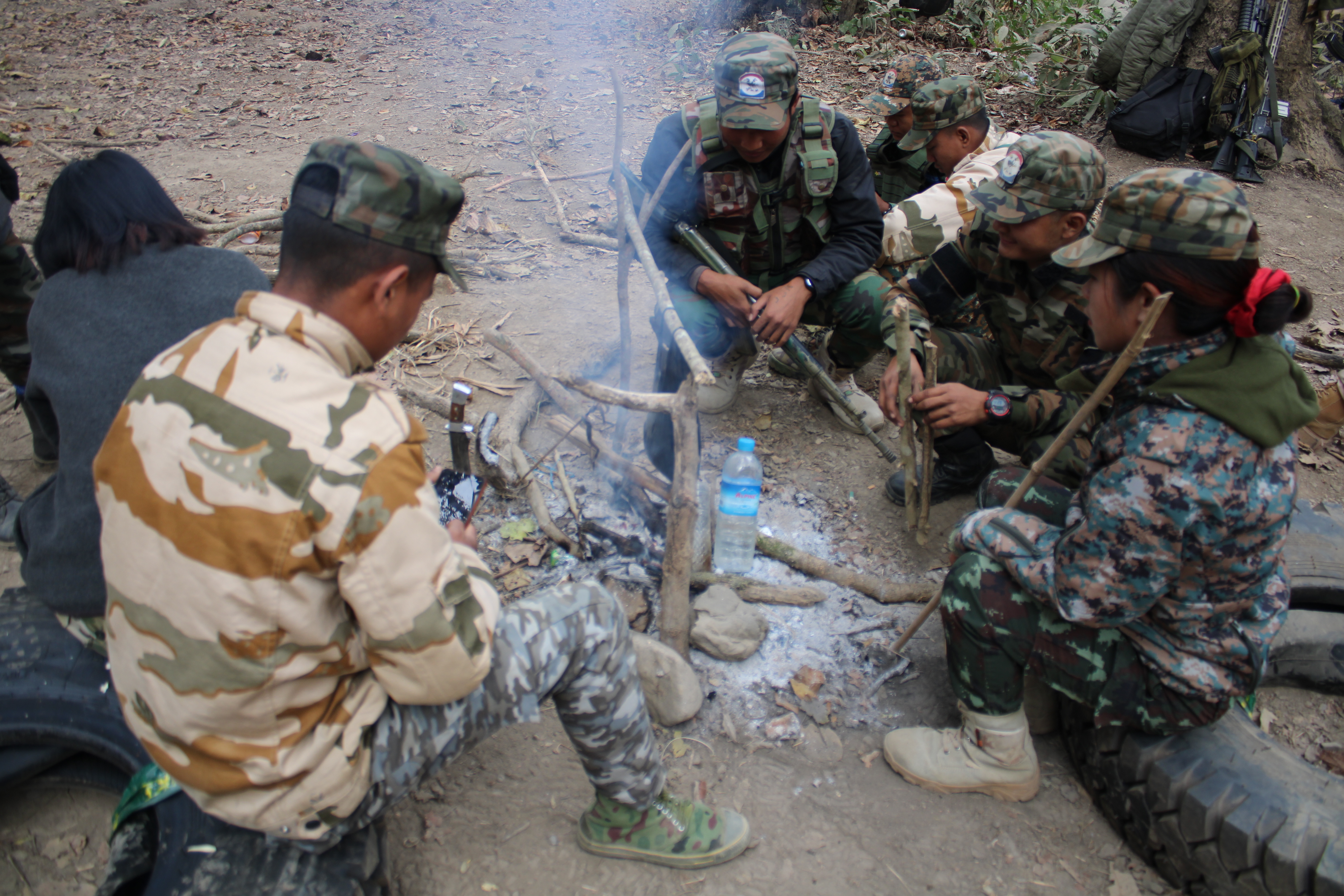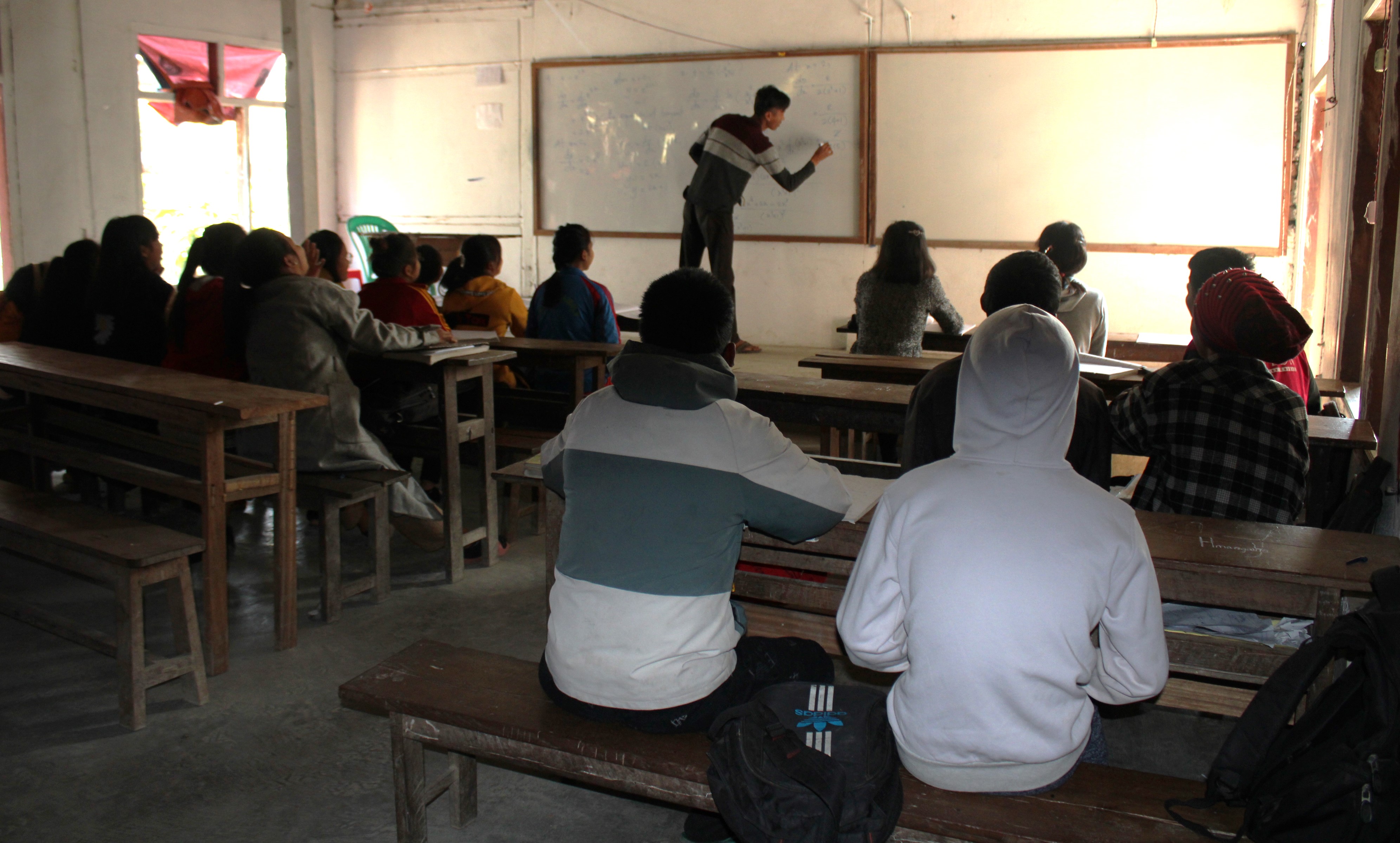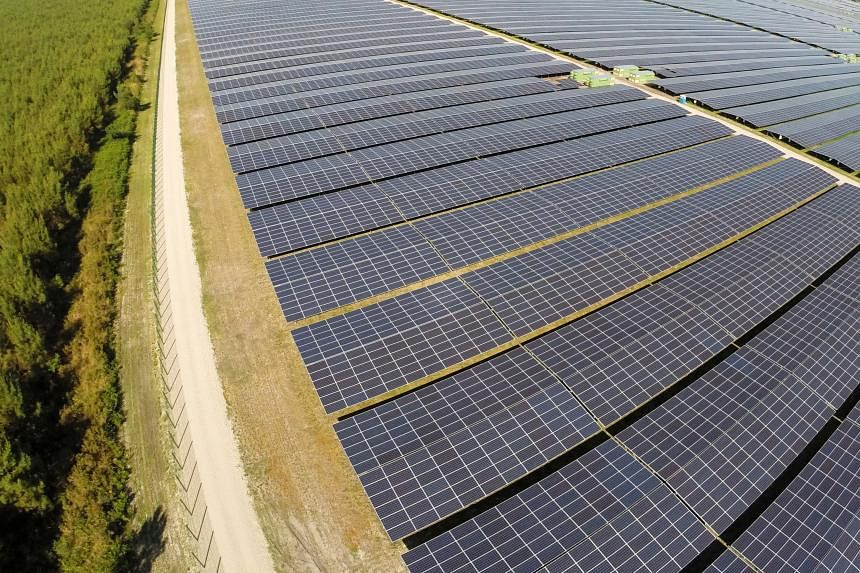Hundreds rally in Warsaw in support of Palestine, denounce Israeli attacks on Gaza
Protesters raise their voices against violence and call for swift resolution to crisis
Murat Temizer |30.10.2023 -
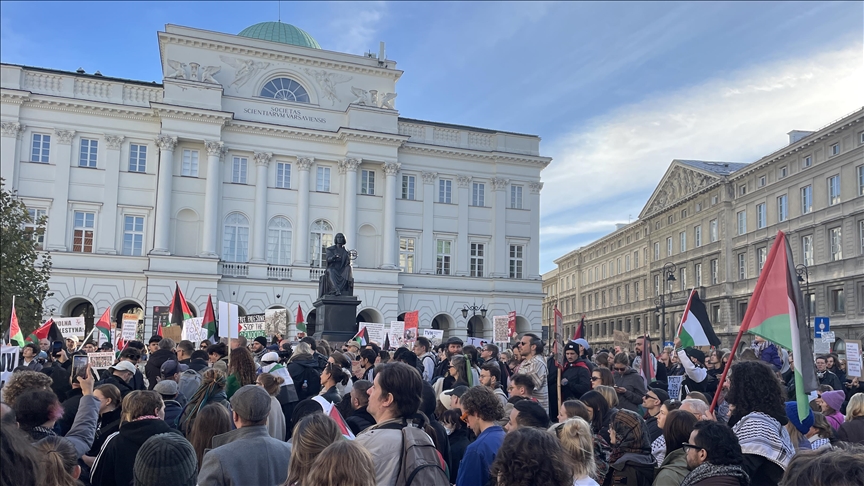
WARSAW
Hundreds of protesters gathered in the Polish capital Warsaw's Old Town Square on Sunday in a show of solidarity with the Palestinian people and to strongly denounce Israel's attacks on Gaza
Amid the square’s historical cobblestone streets and centuries-old architecture, demonstrators from diverse backgrounds and affiliations came together to express their support for Palestine.
They raised their voices against the ongoing violence and called for a swift resolution to the crisis.
Throughout the protest, the atmosphere was charged with passionate chants, with banners and placards bearing slogans such as "Freedom for Palestine," "From the river to the sea, Palestine will be free," and "Stop the genocide in Gaza."
"There is torture and death in Palestine. A solution should be found as soon as possible," Rafal, a Polish citizen who took part in the protest, told Anadolu.
Malgorzata, another protester, said: "Stop the genocide. Take swift action. Enough is enough."
Israel has heavily bombarded Gaza since Oct. 7, when the Palestinian group Hamas carried out a cross-border attack.
The number of Palestinians killed in Israeli attacks on Gaza has risen to 8,005, including 3,342 children, 2,062 women and 460 elderly people, according to the Health Ministry.
More than 1,400 Israelis have been killed in the conflict.
Israeli army spokesperson Daniel Hagari announced Saturday that Israeli forces were expanding their operations and moving to the "next phase of our war against Hamas," which includes ground operations.
Gaza's 2.3 million residents are meanwhile grappling with shortages of food, water, fuel and medicine due to Israel’s blockade of the enclave.
Crowd storms Dagestan airport in Russia after arrival of Israel flight
About 20 people injured after hundreds search for Israeli passengers
:quality(70):focal(1345x670:1355x680)/cloudfront-eu-central-1.images.arcpublishing.com/thenational/DYT37ASPFE4VA5BAJEFFNEK3DE.jpg)
Hundreds of protesters stormed the main airport in Russia's Dagestan region to protest against the arrival of a flight from Tel Aviv. AP
The National
Oct 29, 2023
Russian authorities said the main airport in the Dagestan region is “provisionally closed” until November 6 after it was stormed by hundreds of people following reports that a flight from Israel had arrived.
Footage showed a large crowd of people inside the airport, with some holding Palestinian flags.
Other videos showed protesters storming one plane with at least one jumping on the wing looking for passengers, Russian media reported.
People were also heard searching shouting anti-Semitic phrases and examining the passengers' passports, AP reported.
The plane's identification number showed that the Russian carrier Red Wings had arrived from Tel Aviv at 7.17pm, according to flight-tracker FlightRadar24.
The incident occurred at an airport in Makhachkala, the capital city of the predominantly Muslim Caucasus.
Rosaviatsia, Russia's aviation authority, said the group had been removed from the airport by 10.20pm local time. Russia's Investigative Committee says it has ordered a criminal investigation into the incident.
About 20 people were injured, with two in critical condition, the Dagestan Ministry of Health said. Police and protesters were among those injured.
The Dagestani government urged its citizens to react to “the current situation in the world with understanding”.
“Federal authorities and international organisations are making every effort to bring about a ceasefire against Gaza civilians … we urge residents of the republic not to succumb to the provocations of destructive groups and not to create panic in society,” it wrote on Telegram.
Dagestan Governor Sergei Melikov said the storming of the airport was a “gross violation of the law” and that those found responsible will face consequences.
“All Dagestanis empathise with the suffering of victims of the actions of unrighteous people and politicians pray for peace in Palestine,” he wrote on Telegram.
“But what happened at our airport is outrageous and should receive an appropriate assessment from law enforcement agencies. And this will definitely be done.”
Israeli Prime Minister Benjamin Netanyahu's office said the country's ambassador is working with Russian authorities to protect the well-being of Jewish people and Israeli citizens.
“The State of Israel views with utmost gravity attempts to harm Israeli citizens and Jews anywhere,” Mr Netanyahu's office said on X.
|
MAKHACHKALA October 30. 2023 (Saba) - Demonstrators have stormed an airport in Dagestan after a plane coming from Tel Aviv in protest against the Zionist aggression against the Gaza Strip.
Agence France-Presse said on Sunday “The authorities in Makhachkala, the capital of the republic of Dagestan which is a Muslim majority, closed the airport to air traffic, after dozens of demonstrators stormed the airport following reports of the landing of a plane coming from Israel.”
The demonstrators who denounced the Zionist attacks on Gaza entered the passenger building, reached the airport runway, and crossed the barriers in hopes that searching departing cars in search of Zionist passengers, according to video clips broadcast by the Russian Izvestia agency and RT channel and circulated on social media.
The Russian Aviation Agency announced that “following the raid by unidentified persons into the navigation area at Makhachkala Airport, the decision was taken to temporarily close it to arrival and take-off flights,” confirming that security forces had arrived at the location.
In turn, Reuters news agency quoted the aviation agency as saying all planes heading to Makhachkala in Dagestan were diverted to other airports.
Several Arab and international cities and capitals have witnessed demonstrations and marches for 23 days denouncing the brutal Zionist attack on the Gaza Strip.
H.H

